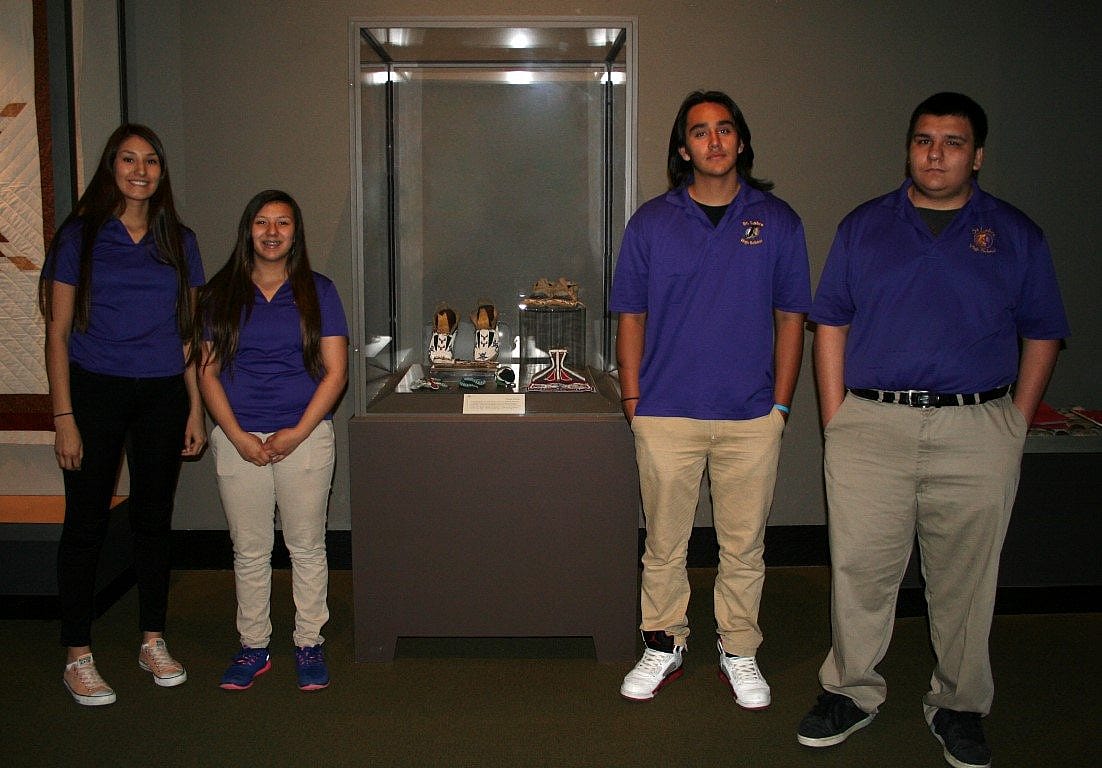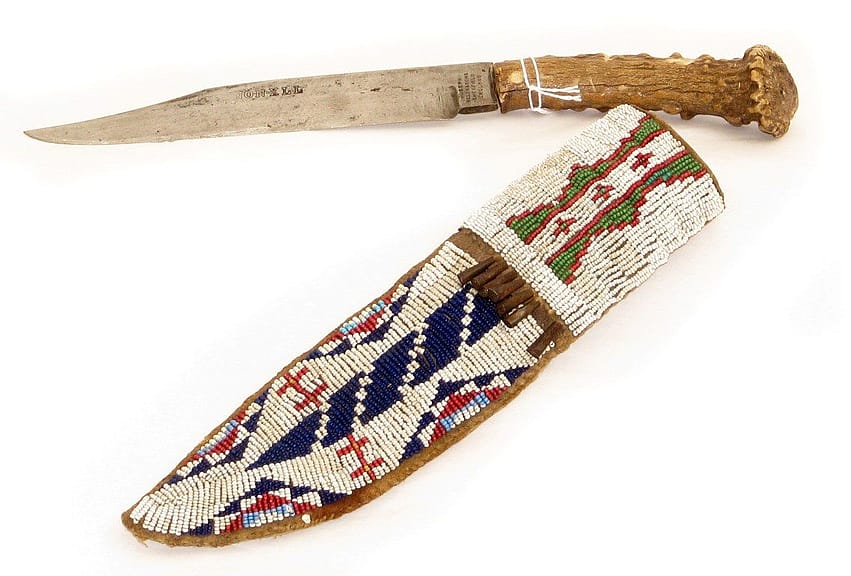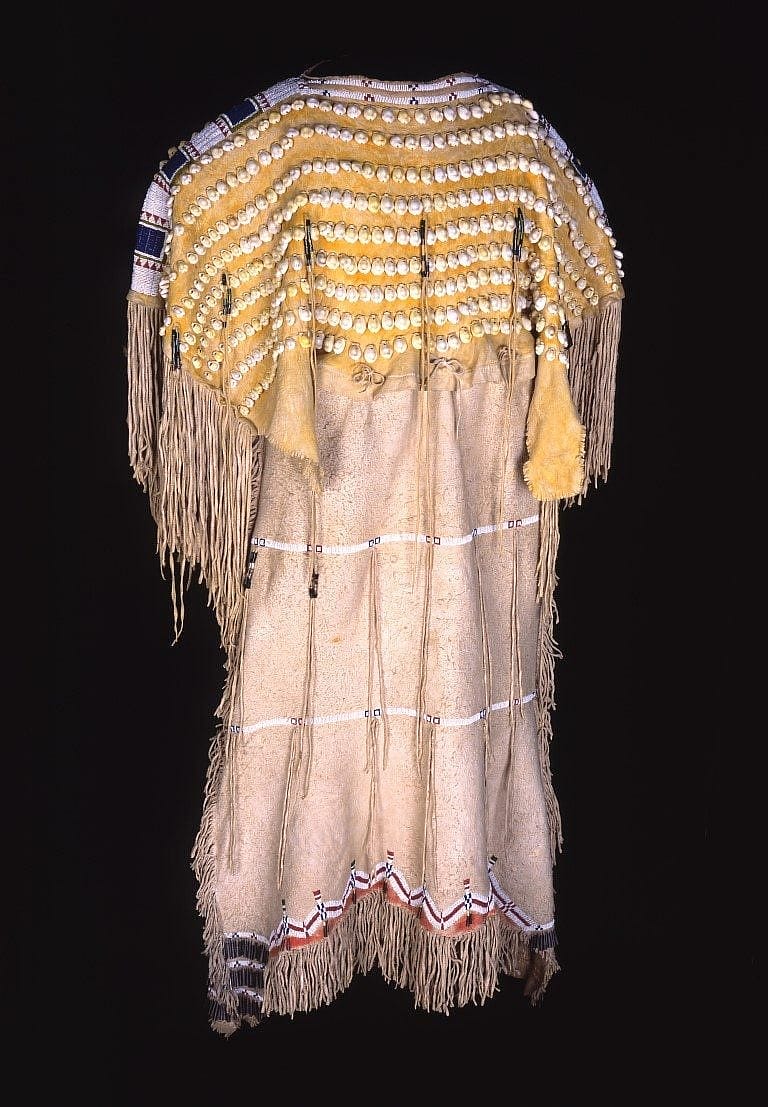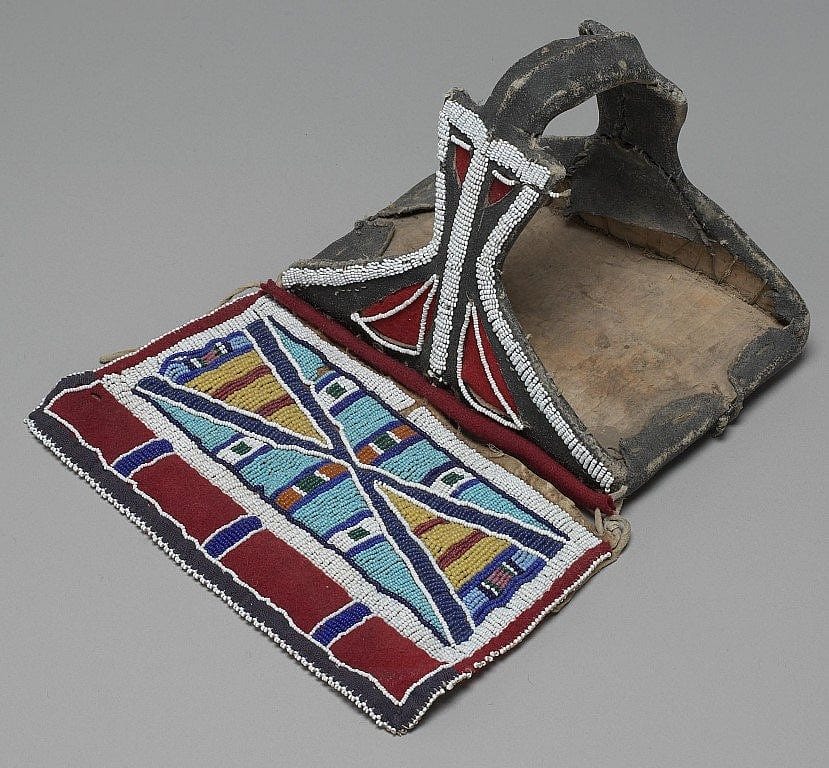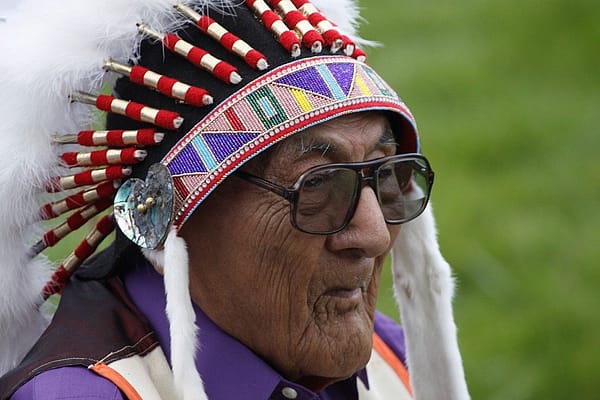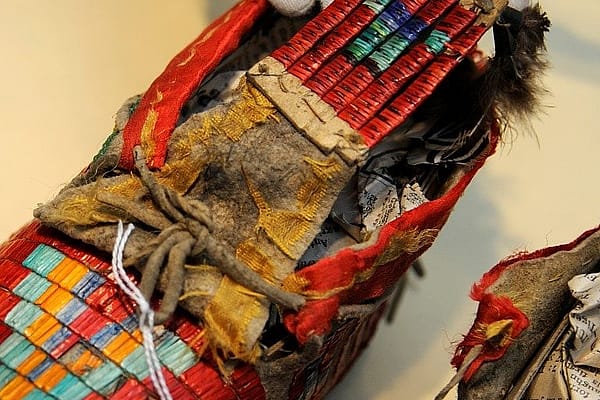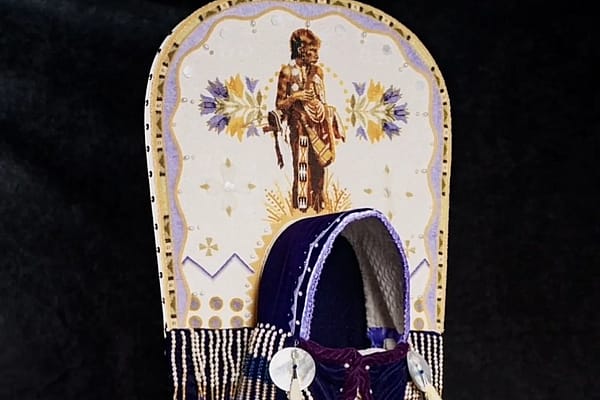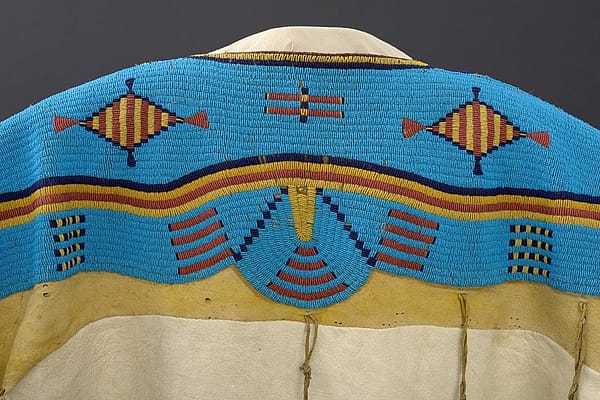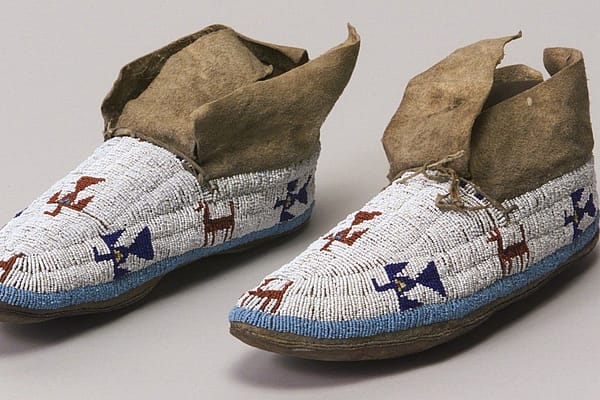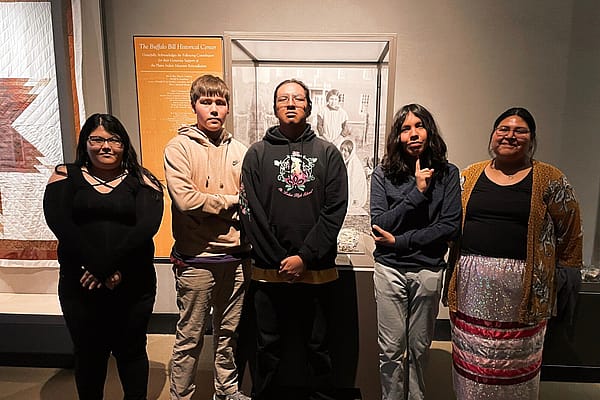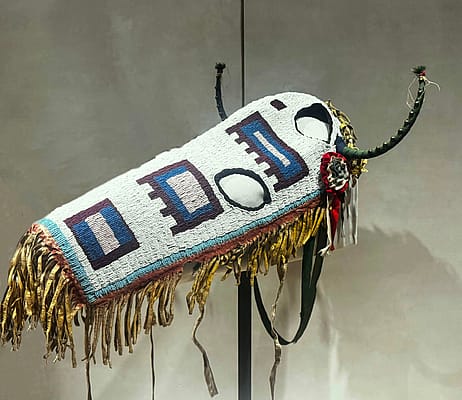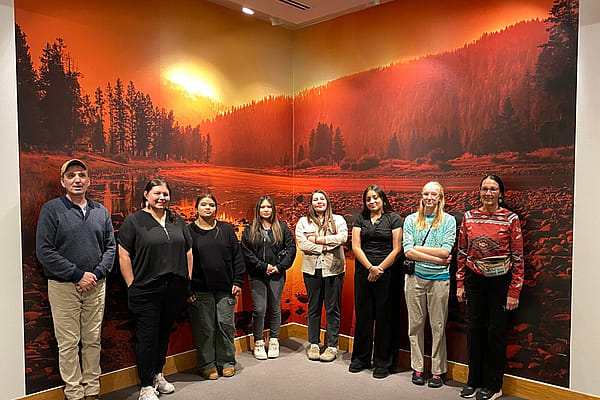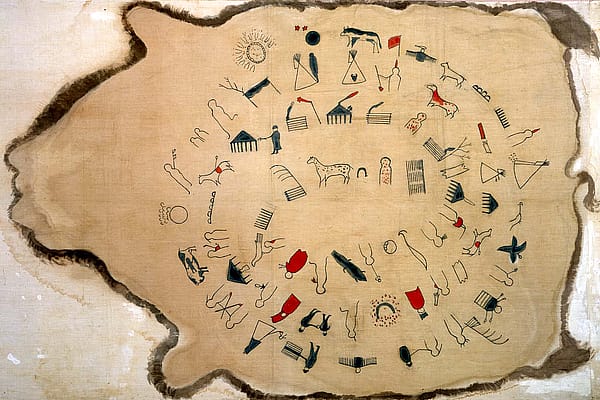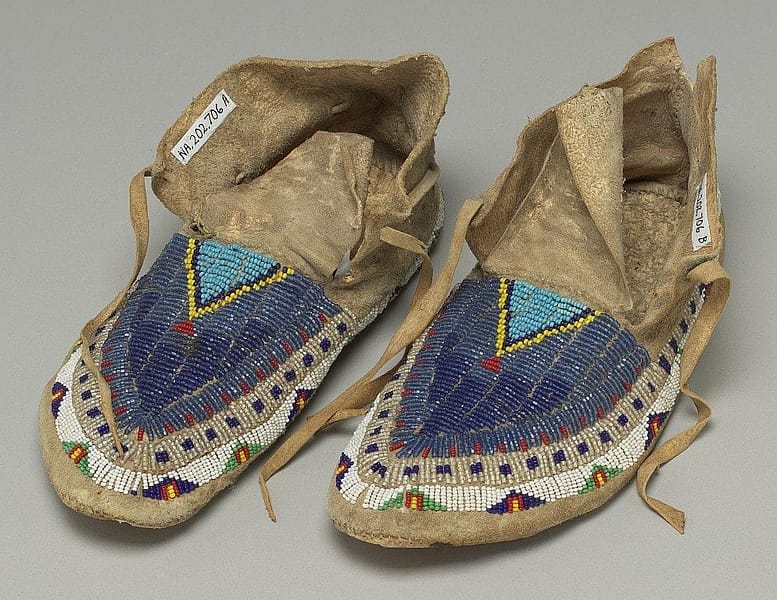
St. Labre Indian School visit, 2016
St. Labre school visit to the Buffalo Bill Center of the West in April 2016.
For the eleventh year, the Plains Indian Museum hosted students, elders, teachers, and administrator from the St. Labre Indian School in Ashland, Montana. Their experience is part of a collaborative program between St. Labre and the Buffalo Bill Center of the West. Four students—Shamon Flatmouth, Kaelene Spang, Kaitlyn Fisher, and Bryson Redgrave—studied beadwork and learned essential museum practices by going through the steps needed to produce a small exhibition case from the collections. Their visit included two days of intensive, hands-on learning with Center staff. Part of their assignment was to write about objects that provided inspiration, as well as the role of museums in the 21st century.
Shamon Flatmouth was inspired by some of the bow and knife cases on exhibit and in storage. He observed that “Bow and knife cases, bows and arrows were used to help the hunters to get food and to supply the tribe when they were in need of food.” He was also intrigued by the beadwork he studied, especially because viewing the beadwork close up “showed me how my elder tribal members used special skills and raw materials to connect their lives to this work.” Shamon is a beadworker and appreciates that “it showed that even my beadwork connects to how they used to do it in the past.”
Kaelene Spang enjoyed studying the many pairs of moccasins in the Plains Indian Museum collections: “I think moccasins are important because they not only have an essence of beauty but because my ancestors used them to protect their feet (footwear) versus wearing shoes. Also, as a beader I enjoy analyzing and find it helpful to analyze other people’s beadwork on moccasins.”
Kaitlyn Fisher identified two of her favorite objects as a Northern Cheyenne dress, or Blackfeet dress because she is interested in how they were made and how much time they took to make, and wants to learn about the designs, beadwork, and stitching. Kaitlyn comments that “Material culture is important because it’s what we’re made from as well as where we came from. I feel that it is important to know about everything we possibly can about where we came from. I would really love to take in as much as I can so I am more knowledgeable when people ask me who I am.”
Bryson Redgrave chose to focus on the concept of oral traditions, many of which are shared through the audiovisual and textual elements within the Center of the West: “When I think of tradition, I think of oral tradition because it is how we as a tribe conversed. They used signals and speech to converse while hunting together as one. They needed to know when to attack as a pack so their plan does not fall short. I believe oral tradition is the most beautiful thing to embrace because it is something that ties our culture together and unites us with our ancestors and those who came before us. I believe oral tradition is the virtue of all things.”
The students also left us with their thoughts on why museums are important. From Kaelene, “The whole message/reason for the museum is important because it reflects on how my ancestors, mother earth, and the white settlers interacted. I also find it important that I, as a Native American, should know and acknowledge these ways. It is history that matters. It matters to me because my Cheyenne culture and history is fading away. If no one learns these ways, I won’t be able to teach my children and they won’t know where they’re from or their culture.”
And finally, powerful comments from Kaitlyn: “The world needs museums because we need to know about things we have questions about. We need this museum because people need to know about Plains Indians. They are special because topics are continuously questioned and sometimes answers are given through museums. Plus, you learn more than you expected to when you walk out. People can connect to museums because they appreciate what they are being told about something they didn’t even know existed.”
We’d like to thank the students for sharing their thoughts, and extend our appreciation to the St. Labre School for supporting the students’ time and travel for the museum studies and beadwork class field trip. Their exhibition case can be viewed through October 2016 in the entrance of the Plains Indian Museum.
Written By
Rebecca West
Named as the Center of the West's new Executive Director in April 2021, Rebecca West has served as Curator of Plains Indian Cultures, as well as the Collier-Read Director of Curatorial, Education, and Museum Services. Rebecca has worked with the people, objects, ideas, and programs that define the Plains Indian Museum at the Buffalo Bill Center of the West.
